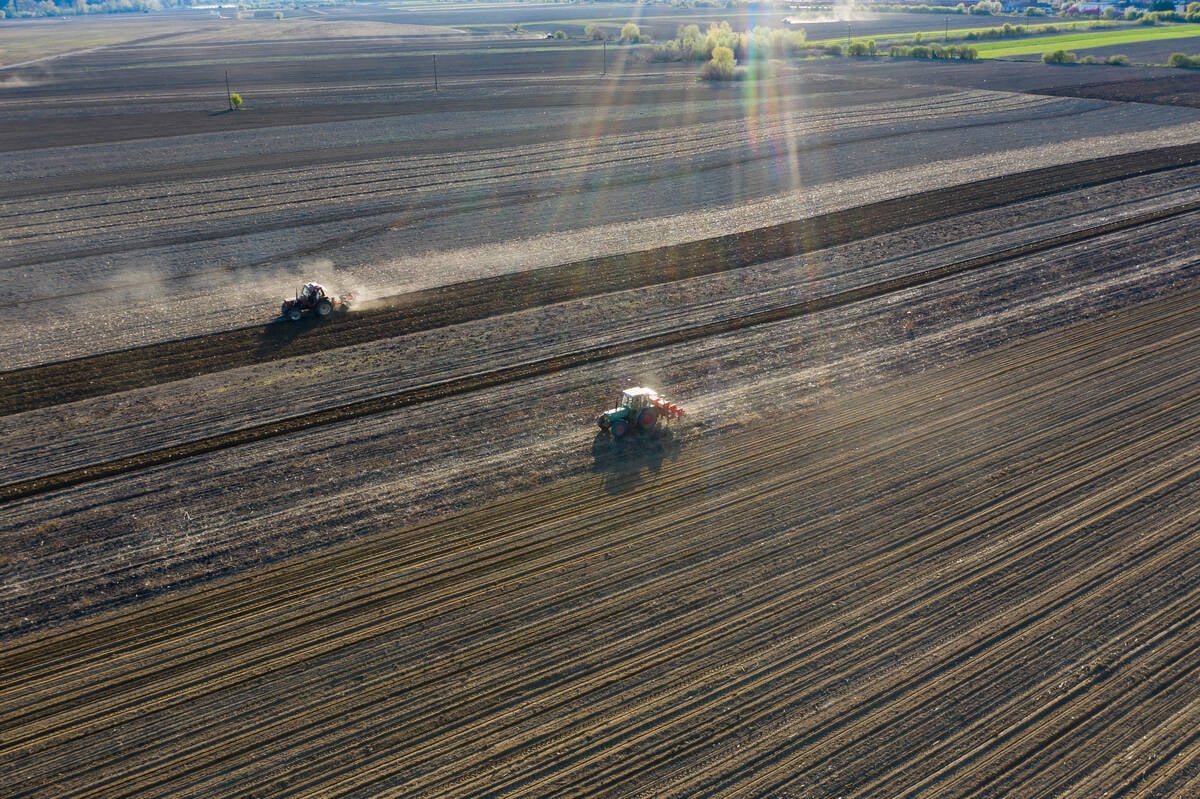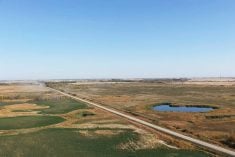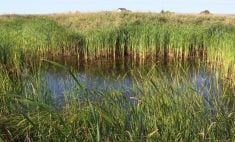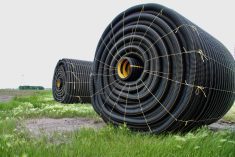They’re a rarity in Western Canada right now, but that didn’t stop Lawrence Vandervalk from installing a subsurface drip irrigation (SDI) system on his farm in Alberta.
“Technology doesn’t stand still. Technology keeps moving forward. This is just another step in the progression of irrigation, and I think it’s a big step,” says Vandervalk, who grows barley, durum and winter wheat at his mixed cow-calf and grain operation in Nobleford, Alta. He also grows yellow mustard as a specialty crop.
Like it is in much of the Prairies, centre pivots are the main type of irrigation in Vandervalk’s area. He opted to have subsurface drip irrigation installed on one of his fields in 2020 to boost crop production — SDI can get to those dry corners of the field circular pivots miss — and also make more efficient use of his irrigation water.
Read Also

Improving agriculture’s economic and environmental sustainability
Improving the resilience of Canadian agriculture requires more flexible and targeted conservation and safety net programming, according to doctoral and distinguished fellows with the Canadian Agri-Food Policy Institute.
SDI is a variation of traditional low-pressure drip irrigation. Central lines are installed underground in a field to feed drip lines that apply water directly to the root zone. The systems can also be used for subsurface drip fertigation (SDF) to supply nutrients and water directly to plant roots.
“The efficiency of subsurface irrigation is absolutely unbelievable,” says Vandervalk, who grew winter wheat as his first crop on the 640-acre field in 2021. Even though it was another in a string of dry seasons, he only needed 10 and a half inches of water to irrigate the field. Many of his neighbours, he says, put on 18 inches, “and still fell behind with their central pivot.”

Brady Funk is hoping to see similar results on his dryland farm in Saskatchewan, where he’s getting a subsurface drip irrigation system put in on 960 acres near Lucky Lake this year. Once completed, he says it’ll be the largest SDI field in Canada.
It’s an expensive project since the irrigation water must be pumped up a hill from nearby Diefenbaker Lake, but Funk is hopeful he’ll see a return on his investment within two and a half years by growing high-value cash crops like chickpea on the land.
“We are really going to look at the crops with the highest yield potentials for the first couple of years, just to see what the potential is going forward because if this is profitable, I would like to incorporate more acres,” he says.
Funk likes the idea of having more land irrigated with less water, but he’s also excited about some of the other benefits he sees with subsurface drip irrigation.
“The most important component for me would be is the water going directly to the root system, which is how a plant should be watered. You shouldn’t be watering the leaves of the plant because that’s how disease gets introduced,” he says.
Funk sees fertigation as another intriguing possibility. He says by enabling farmers to, essentially, spoon-feed nutrients to plants at their roots, whether it’s in different zones or at important crop stages such as flowering or tillering, they can optimize their yield potentials.
Big water savings
Southern Irrigation in Lethbridge, Alta., is building the SDI system at Funk’s farm and it installed the one at Vandervalk’s farm as well. The company’s SDI director, Kees Van Beek, says Southern Irrigation is pioneering subsurface drip irrigation in Canada, installing its first 40 acres of subsurface drip irrigation in Gem, Alta., eight years ago. Today, SDI accounts for about 10 per cent of the company’s business.
Van Beek says there are large markets for SDI around the world, including the American Midwest, where it’s used to grow a wide range of crops including corn, soybeans and canola — and he says he believes there’s plenty of potential for increased adoption in Canada.

The main driver for subsurface drip irrigation is water savings — according to Van Beek, SDI systems are close to 98 per cent efficient in getting water where it needs to go. A limitation with pivots or any overhead irrigation system is winds can cause significant evaporation losses but that’s not an issue for SDI. Because of that, up to 30 per cent less water is needed, says Van Beek.
In addition, farmers save money on herbicides and fungicides because there are fewer weeds and the crop disease risk goes down when irrigation is happening beneath the soil surface, he adds. Also, using a subsurface drip fertigation system is better for the environment since it minimizes the danger of surface runoff from fertilizer applications, he says.
“We irrigate in a way that we match the soil infiltration rate, the amount of water the soil can absorb. By doing that, we never have runoff,” says Van Beek.
Subsurface drip irrigation generally costs more to install than central pivot irrigation, but the price goes down if you can do it at scale with larger acreages, Van Beek notes. When you add in water savings, the extra production on acres in those corners that pivots miss, and the enhanced yields you can get with SDI, the return on investment can be equal to or even better than pivot irrigation, he says.

“Over the years, we also learned more and more about how much we can increase yields by using subsurface drip irrigation,” states Van Beek, adding farmers can expect at least a 15 per cent yield increase with SDI. He says that’s a conservative estimate since they’ve seen yield increases of as much as 58 per cent.
When Southern Irrigation installs subsurface drip irrigation, the fields are segmented into irrigation zones. The systems are fully automated to eliminate headaches for farmers, and they can be equipped with pressure compensation emitters that ensure water is evenly distributed throughout a field, regardless of elevation changes, Van Beek notes.
The infrastructure for these systems includes tubes and emitters that comprise the drip lines, supply lines that feed them and flush lines that carry away excess water. Van Beek says the drip lines are typically placed about 12 inches deep and about 36 inches apart.
When designing an SDI system for their farm customers, Southern Irrigation considers numerous factors, such as the soil profile, the elevation and shape of the land, where the water’s coming from and the farmer’s needs, Van Beek notes.
A farmer’s long-term objectives and expansion plans are also considered, which is why they’ll build in future capacity when needed with oversized main line infrastructure, he adds.
“We want to have a system that works this year, but also works in 25 years from now,” he says.
















